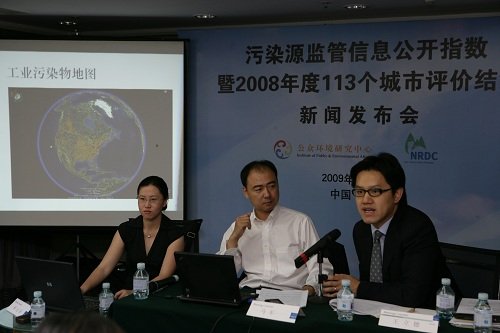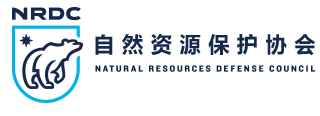
2008年5月1日开始实施的《政府信息公开条例》及《环境信息公开办法(试行)》对完善中国环境治理机制具有里程碑式的意义。国际经验表明,扩大环境信息的公开有助于减少污染物排放。为了更为系统地评估各地政府部门对相关法规的执行情况,同时也为了明确信息公开元年的基准线,公众环境研究中心(IPE)与自然资源保护协会(NRDC)共同开发了污染源监管信息公开指数(PITI指数),并据此对113个城市2008年度污染源监管信息公开状况进行了初步评价。
这113个城市涵盖了哈尔滨、济南、石家庄、长沙、广州、成都、乌鲁木齐等110座国家环保重点城市, 广泛分布于中国的东、中、西部地区。通过对当地政府所作的超标违规记录公示、信访投诉案件处理结果公示、依申请公开等8个指标的系统性、及时性、完整性和用户友好性进行定量和定性分析,我们对每个被评估城市的污染源监管信息公开状况进行了评价,给出了细项得分和排名。
环境信息公开取得进展,但仍处于初级水平
初评结果显示,环境信息公开在中国许多地区取得了进展。在污染源监管信息主动公开方面,上海、宁波、太原、武汉等城市已经开始较为系统地公布当地企业日常超标违规的监管记录,北京、重庆、福州、焦作等城市则在信访投诉案件及其处理结果公示方面有良好的表现;而在执行依申请公开方面,合肥、青岛、昆明、郑州等成为对信息公开申请做出积极回应的城市中的佼佼者。
初评结果显示,作为环境信息公开元年的2008年,污染源监管信息公开总体上仍处于初级水平。污染源监管信息公开指数的分值满分为100分,其中超过60%的分值依据法规要求设定,余下部分则主要是依据公众实际需要而设定的倡导性指标。然而,113个被评价城市中,得分在60分以上的城市仅有4个,不足20分的城市多达32个,113个城市的平均分则刚刚超过30分。
污染源监管信息公开与经济发展水平相关,但后者并非决定性因素
初评结果显示,环境信息公开水平呈现出显著的地域差别,总体上呈现东部高于中部,而中部又高于西部的态势。中国东部地区纳入评价范围的56个城市的PITI指数平均得分为36.07;中部34个城市的PITI指数平均得分为27.71 ;西部23个城市的PITI指数平均得分则为22.60。
众所周知,中国的东、中、西部地区不只是地理单元的划分,也是经济单元的划分。东、中、西部地区被评城市的得分落差,实际显示了环境信息公开和一个地区的经济发展水平在一定程度上的关联性。
但我们细加分析,可以看出环境信息公开和经济发展水平的相关性不是绝对的。在公开水平相对较低的中西部地区,武汉、重庆、太原的表现称得上是“异峰突起”, 而在污染源监管信息公开水平总体较高的东部沿海省区,也存在湛江、本溪、泰安等异常低洼的“盆地”。
对比分析同为沿海经济发达地区及外向型出口加工基地的广东省和江苏省,可以看到,江苏省9个被评价城市 2007年人均GDP的平均值是39846元,PITI指数的平均得分达到了 43.54分;而广东省9个被评价城市 2007年人均GDP的平均值为45590元,但平均得分仅为 34.28分。
一些排放强度较大、污染较重的城市公开程度很低
值得注意的是,一些工业污染排放强度较高的地区,PITI指数得分却明显偏低。以2007年万元工业产值的污染物排放强度 作为变量进行分析,我们可以发现,东、中、西部一些污染物排放强度较高的地区,比如石嘴山、宝鸡、湘潭、宜宾、泸州、本溪、开封、枣庄等,其环境信息公开程度非常有限。
同时值得注意的是,一些污染较重的城市PITI指数得分很低。以2005年空气污染物年日均值 作为变量进行分析,兰州、株洲、大同、临汾、阳泉、包头、岳阳、攀枝花等二氧化硫和/或可吸入颗粒物浓度偏高的城市,污染源监管信息的公开程度也非常有限。
当然,部分PITI指数得分较高的城市的环境质量状况也并不乐观,其中原因很多,但不容忽视的是,公开的环境信息尚未被社会重视,还没有推动更加积极的公众参与,也就难以转换成促进环境保护的真实动力。我们在6·5环境日到来之际推出PITI指数,也是为了推动公众更好地利用公开的环境信息,参与到环境决策和管理中来。
依申请公开艰难起步
为评估《环境信息公开办法(试行)》中首次对环保部门作出的依申请公开要求,我们向113个被评价城市分别申请公开当地2008年9月份的污染企业行政处罚名单和经调查核实的公众对环境问题或者对企业污染环境的信访、投诉案件及其处理结果,其中有27个城市提供了全部或部分名单,但还有多达86个城市未能提供名单。拒绝申请的理由除了“不宜公开”之外,还包括这些记录涉及企业商业秘密,申请公开需要上级政府部门开具公函,以及为“保发展”不能公开等。一些城市的工作人员在听到是信息公开的申请时多次直接挂断电话,一些城市则根本找不到具体负责部门。
毋庸置疑,PITI指数的评价反映了环境信息公开存在的差距。但找到差距的目的,在于推动问题的解决。此次评价的一个重要目标,就是要发现各地在污染源监管信息公开方面的良好案例,进而把这些好方法在城市间分享。由于这些案例来自于实践,具有很强的可操作性,因而推而广之是完全可能的。
四大直辖市需要优势互补
比如,对比北京、上海、天津、重庆四大直辖市的排名,我们看到,上海、重庆、北京排名靠前,而天津市排名偏低。分析细项得分可以看出,上海市在日常超标违规信息的公示方面表现突出,开了污染源监管信息全面公示的先河;而重庆和北京则在公众信访、投诉案件及其处理结果的信息公示方面形成了自己的特色;同时这三个城市都比较积极地回应了信息公开的申请。要改善自身表现,天津可以在这三个涉及环境信息公开的关键方面借鉴兄弟直辖市的做法。
作为直辖市,上海、重庆、北京的表现也远非尽善尽美。分析细项得分,我们可以看到,三个城市在信息公开方面都存在明显的短板,使得其排名落在宁波、合肥、福州、武汉等表现更为均衡的城市之后。比如上海市在信访、投诉案件信息公示方面差距显著,一座1800万人口的城市一年间可以获取的信访投诉案件及其处理结果的公示信息竟只有7条;而重庆、北京在日常超标违规信息的公示方面既不全面,也没有形成体系。不难看出,上海和重庆、北京的长项和短板刚好相反,正可以通过相互借鉴迅速改进。
创新范例并非为特大城市所专美
污染源监管信息公开的创新范例并非为特大城市所专美。比如,威海就开了重点污染源在线监测信息实时网上发布的先河;常州则利用当地主要媒体定期发布企业超标违规记录名单;浙江台州日常监管信息公布的全面性名列前茅;湖州在排污费公示中同时发布依据的排污量特别是超标排污情况;辽宁省沈阳等主要城市环保局网站的全站搜索功能均较强,提升了其用户友好性;合肥则将我们申请公开的2008年9月超标违规企业名单直接发布在其网站,并提供了相关链接,使得这一名单得以为更多用户获取。
“全明星”阵容凸显信息公开的现实可行性
通过对细项得分的排名,以及对相同得分城市进行更加细致的分析,我们推出了8个细项上各自的得分冠军。将他们组合在一起,可以形成一个类似体育竞赛中的“全明星阵容”,而这一组合的最终得分高达 89.5分。这一成绩也具有很强的标杆意义,因为它不是主观臆断的产物,而是基于对实际操作的评价而得来的,它显示了在中国当前的社会经济条件下,污染源监管信息公开是可为的,如果一个城市能够取各家之所长,已经有现实的可能性做到较高的水平。
环境信息公开为污染减排创造条件
越来越多的人认识到,信息公开对于完善中国的环境管理机制,克服地方保护、执法不严、违法成本低等强大阻力,有着特殊的重要意义。作为NGO能够对政府环境信息公开的水平开展评价,本身也体现了中国在公众参与和环境信息公开方面取得的历史性进步。通过PITI指数评价,我们看到环境信息公开已经在2008年艰难破冰,我们也看到各地环境信息公开存在巨大的改进潜力。我们愿意和社会各界、特别是各级政府部门加强沟通和配合,共同推动信息公开水平的更快提升,为中国迈向可持续发展之路提供新的助力。

